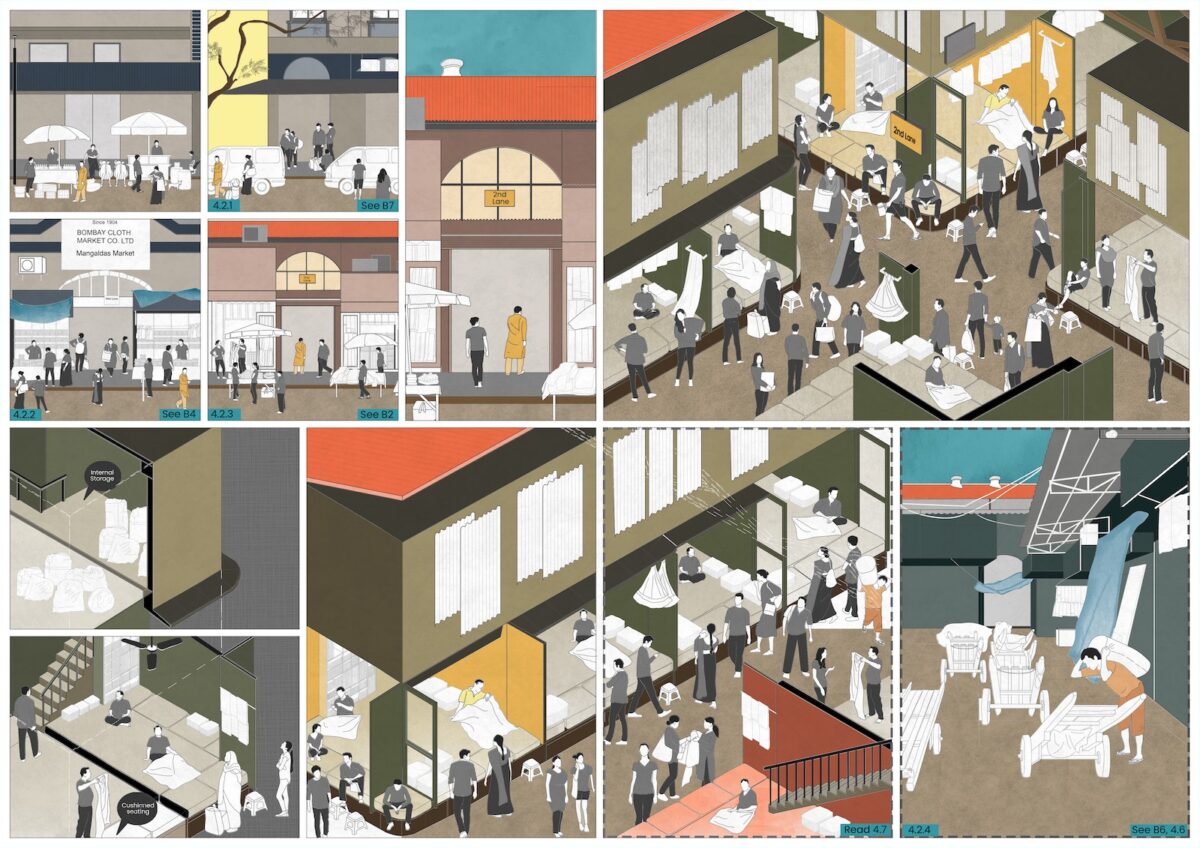Based in Mumbai, India
Website https://sites.google.com/sea.edu.in/aakankshashah/about
Research project Friendships, Solidarities and Spatialities of Urban Enterprise
Location School of Environment and Architecture (SEA), Mumbai, India
Can you describe your research project?
The research embodies a spatial inquiry – How do friendships and solidarities shape and are shaped by the urban enterprise? It acknowledges that these ties are not neutral and aims to establish a relationship with the qualitative nature of space that can absorb them. It creates an alternative narrative of the inner city through vignettes of comraderies, affinities, associations, and frictions as means of navigating the megacity while weaving in the entanglements among these across three scales: shop, building, and neighborhood. Thus, it moves beyond the conformist discourse on the market precinct which largely focuses on poor housing infrastructure, migration, and its consequent population dynamics.

Why have you chosen this topic?
Over the years, the ‘typology’ of markets has transformed from bazaars to shopping complexes and malls emerging from efficiency calculations. Today, as most transactions have shifted to digital platforms, these infrastructures seem to collapse. Yet, the inner-city markets continue to operate with a large footfall of people who come to buy all kinds of things. For instance, my aunt who grew up in the neighborhood of Kalbadevi and later moved to the suburbs still prefers to buy fabrics from that specific shop in Mangaldas Market despite the long travel hours, almost as a ritual. It is a cultural node with a plethora of practices that hinge on each other through kith and kin relations.
However, the discourse on the market precinct largely focuses on housing conditions, access to livelihood and basic services, and concerns about ecological commons. Thus, the research titled: Friendships, Solidarities and Spatialities of Urban Enterprise comes from my interest in deciphering the tectonics of this urban landscape through an ethnographic understanding of people and their everyday practices.

What research methods do you use?
Being an architect, a large volume of my work is centered around imagining built and unbuilt environments that get appropriated in different ways. My research method is a two-prompt approach that involves flanerie and drawing as important processes/tools to decode the field.
The figure of ‘flaneur’ was explored by German philosopher Walter Benjamin in his fragmentary work– ‘The Arcades Project ’ (1927-1940) to examine the experience of urban life. The term has evolved from the French verb ‘flaner’ which means to stroll in leisure or saunter. Flanerie is a method to engage with the city and its processes with nothing too definite in mind to open up different spatialities that would otherwise remain inaccessible due to preconceived notions. It necessitates an expanse of time and repeated field visits to make friends on-site and engage with their everyday practices.
Further, drawing becomes a tool to put together the social and physical environments, routines and aspirations of the inhabitants. Moreover, it is a means to look beyond the conformist social norms and ‘re-search’ the field for spatial nuances that often go unnoticed at the macro level. The image is as dynamic as the city is since it is a culmination of several overlapping and entangled narratives.

In what way did your research affect your artistic practice?
The research enabled me to devise an oblique way of seeing the world, both literally and metaphorically. The constant ‘re-searching’ and difficulty in holding several fragments of the city in a drawing led to a shift in my method of storytelling from orthography – conventional plans and sections; to spatial portraits- juxtaposition of frames. The fundamental difference between a comic and a film is that of the medium. In films, all the frames are sequentially projected on the same screen while in comics, each frame occupies its own space. Thus, frames construct space-time settings which afford multiple occupancies through kith and kin relations.

What are you hoping your research will result in, both personally and publicly?
I hope the research prompts a dialogue among spatial practitioners to recognize the small forces at play in the urban ground and further speculate the upcoming ‘typology’ of urban enterprise and its form.
I believe it has enabled me to introspect and articulate my practice of drawing and reaching out to the wider public.





